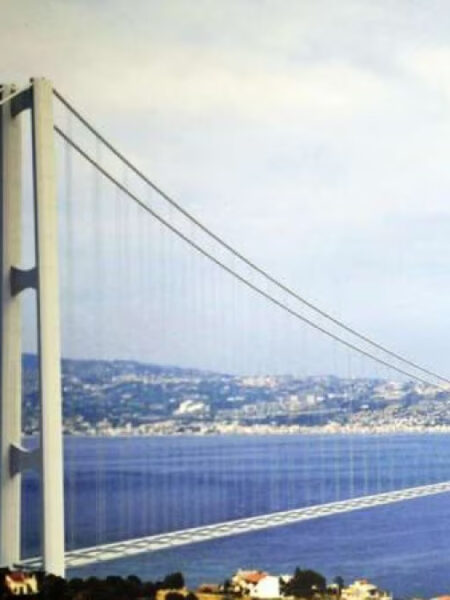Introduction
In the second volume of her Memoirs, French philosopher Simone de Beauvoir describes her passion for a particular region near the city of Marseille: “I descended into all the calanques, explored the valleys, gorges, and passes.” She extensively describes the rugged terrain, evergreen trees, sharp rocks, and the smell of the Mediterranean Sea in the Calanques. Throughout classical literature are numerous mentions of this area, from the Roman historian Justin in the second century (Universal History, Book LXIII, “Origins of Rome and Marseille”) to Stendhal and Virginia Woolf, the latter of whom calls the place a “little paradise” (Les Écrivains et Marseille, Julie Agostini et Yannick Forno, Éditions Jeanne Laffitte). The Calanques are an area in the heart of the city of Marseille, on the coast, stretching from La Madrague neighborhood to the town of Cassis. Since April 18, 2012, the place has been protected by the status of a National Park, and the website of the Calanques National Park presents it as a “cultural jewel”, spanning 8,500 hectares of nature in the midst of the Marseille metropolitan area. By meeting the residents around the site, one quickly realizes that not everyone uses the park in the same way. In fact, Marseille is a city fragmented into a multitude of micro-districts that bring together diverse social classes and strong cultural identities (AUDREN, Gwenaëlle ; DORIER, Élisabeth ; et ROUQUIER, Damien. Géographie de la fragmentation urbaine et territoires scolaires : effets des contextes locaux sur les pratiques scolaires à Marseille In : Les espaces de construction des inégalités éducatives [en ligne]. Rennes : Presses universitaires de Rennes, 2019 (généré le 16 juillet 2023). Beyond the status of a Natural Park, the area is first and foremost the site of a human occupation dating back three millennia, with multiple uses, as emphasized by the first mention of historian Hélène Melin Crapet (REF). Today, the site is an essential tourist destination in the city, facing issues of overcrowding, with certain beaches such as Sormiou hosting up to 3,000 people per day, making it a fundamental element of tourism in Marseille. Moreover, the place is at the center of numerous political conflicts within the municipality of Marseille and at the departmental and prefectural levels, including industrial pollution from the 19th and early 20th centuries, since the 2000s, as well as intense real estate pressure that threatens the living environment of the original inhabitants.
The issue of industrial pollution has been extensively addressed from an ecological perspective in the literature, particularly by specialists at the Aix-Marseille University and the research project led by ecologist Isabelle Laffont-Schwob. From a historical standpoint, analyses of Mediterranean industries help us understand the past uses of the site, as demonstrated by the work of historian Xavier Daumalin. Finally, sociology has proposed several analyses, particularly regarding social relationships with nature, thanks to the contributions of Carole Barthélémy. We have decided to complement these studies by emphasizing the conservation challenges specific to the park, considering the perspectives of the local community and the various narratives they have embraced to sustain their environment. Therefore, the research question this article addresses is: How does the Calanques National Park, as a heritage actor, manage the multidimensional challenges of biodiversity conservation, past and present industrial impact, and the involvement of various stakeholders within a complex peri-urban context ?
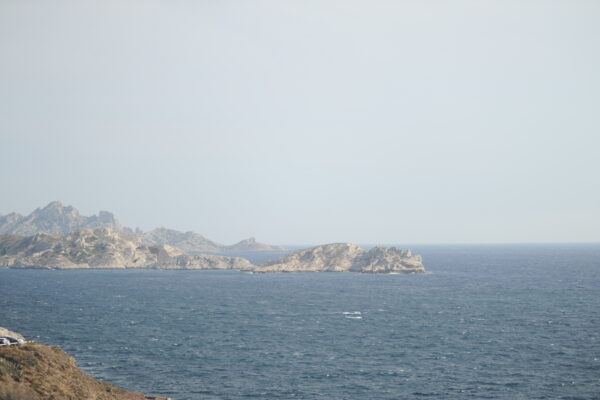
1.1 – Biodiversity, Industries, and Society : A Paradoxical Coexistence
The Calanques National Park is a natural and cultural treasure located on the southeast coast of France, between Marseille, the country’s oldest city, and Cassis, a picturesque fishing village. Established in 2012 and stretching over 520 square kilometers, a large portion of which is underwater, this area constitutes the first peri-urban national park in Europe.
The calanques themselves are spectacular geological formations, dry, deep valleys with steep cliffs plunging into the Mediterranean Sea. They are the product of millions of years of water and wind erosion on limestone rock. The park is home to one of the highest concentrations of living species per square meter, second only to the Amazon rainforest.
Moreover, this natural space serves as a veritable window into our past. It houses a variety of historical relics ranging from prehistoric times (the Cosquer and Hell’s caves, for instance, contain cave paintings over 20,000 years old) to the modern era.
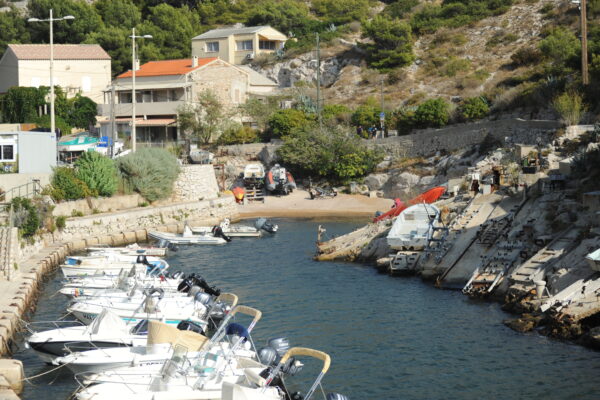
However, according to Francis Talin, the Calanques of Marseille have “endured the Anthropocene even before we had any idea of what it was.” Indeed, industrial pollution in Marseille has been present since the Ancien Régime. Still, the political context of war established in the 19th century encouraged the massive growth of transformational chemical industries (Thomas Leroux) and significantly affected their impact on biodiversity. Consequently, the regulation of industrial waste disposal, which was decentralized and managed by local municipal authorities, rapidly evolved towards centralized control. This shift prioritized economic growth over public health, tolerating and compensating for industrial damages via financial indemnities. Moreover, the environmental consequences seem to have been completely overlooked during this period.
As a result, these industries, both French and foreign ones (like those from Belgium), experienced substantial growth due to the massive employment of Italian and Catalan immigrants, overseen by a paternalistic work environment.
Throughout the 19th century, various measures and laws clumsily and ineffectively attempted to limit these industries’ effects on public health, to no avail.
1.2 – A Long Process of Consecration for the Natural Park: A Controversial Sanctification
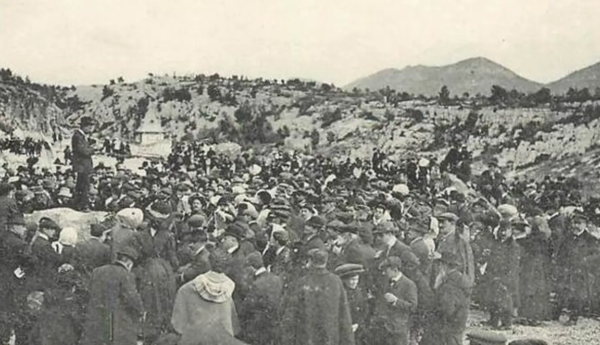
Nevertheless, the year 1910 marks a tipping point, establishing a paradigm shift in environmental consciousness and preservation within the Calanques of Marseille. In the 19th century, the preservation of this natural space was advocated only by the local residents who saw it as a pecuniary asset. Nature was viewed as an economic resource, the damages of which industries could compensate with financial indemnities to the residents. However, from the aforementioned turning point, an exogenous dimension began to integrate these human-human interactions (Calanques residents vs. industry owners), transforming them into human-nature relationships. The conflict no longer centered around resources but the beauty of nature. A sanctification of this natural space occurred, and it became the subject of numerous demonstrations and strikes no longer led by Calanques residents but primarily by different spheres of Marseille’s sociability (elites who saw their exclusive leisure and socialization zones threatened, regionalists creating an identity and myth around these Calanques, local associations, inhabitants, etc.). A range of exogenous actors reappropriating this cause for various reasons allows the severe media coverage of the damages suffered by the Calanques, which are then recognized as a treasure that has to be protected. This environmental heritage continued to be polluted during the following century, but as early as the 20th century, it was integrated into the collective consciousness of the Marseillais as a wild space to be preserved. Following increasingly intense and sustained efforts from the early 2000s, the Calanques National Park was officially created in 2012, thus becoming the first peri-urban national park in Europe.
Nonetheless, this park is far from presenting an ideal of wilderness embodied by Yellowstone. The Calanques of Marseille did not make up a pristine, intact, and preserved natural space for several decades, but are, as we have demonstrated, the product of a co-construction between humans and the environment, characterized by constant interpenetrations. Humans and industrial ruins coexist in this natural space today.
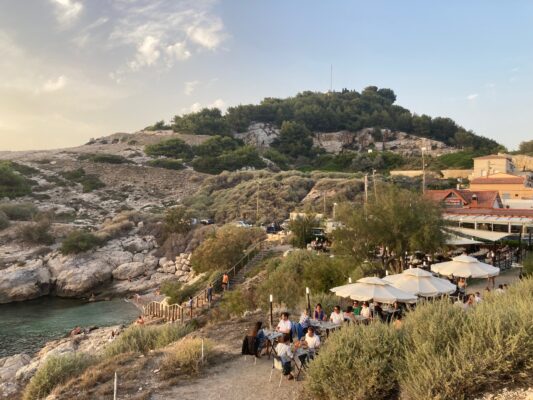
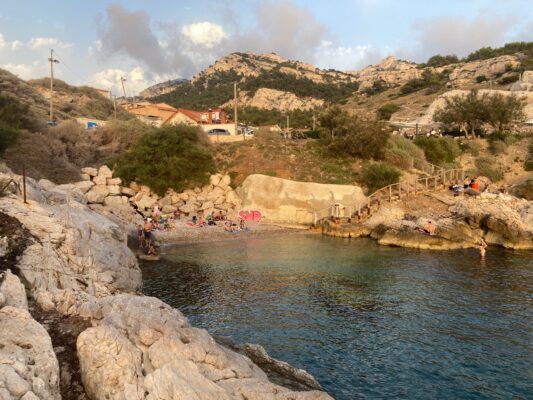
However, these ruins present health hazards and bring forth the notion of risk, which takes on a particular definition here. Isabelle Lafont Schwob defines health risk in the Calanques as a hazard integrated into the exposome. The exposome encompasses not only humans but all living organisms—remembering that there are vulnerabilities, but there is also resilience. Therefore, the notion of risk cannot be simplified into a simple equation where the exposome faces a danger or a hazard. To properly apprehend the situation of the Calanques of Marseille, one cannot start from a conception of risk often used by geophysicists, who deal with seismic or flood risks.
The issue at hand is that the residents of Marseille, and sometimes even those in the vicinity of the calanques, are not aware of this danger. Marie-Charlotte Bellinghery, an ecologist activist in her thirties who has lived in Marseille for approximately 10 years and has a passion for the calanques, recounts one of her weekly excursions:
“[One weekend], I had to go kayaking and stop on a beach that isn’t really accessible on foot, near Samena, and there I saw this little sign “no swimming allowed.” We thought, “well, it’s a beach, there’s no one here because it’s not accessible on foot, so we might as well go swimming.” So it made me wonder if perhaps the places where I swim and walk are polluted here, maybe I don’t know it, and that bothered me because naturally, I don’t want to expose myself to danger while I’m having fun [laughter]. And then I realized that I didn’t know the real history of the calanques, that I didn’t know how much industry there was, and that’s the day I told myself that I needed to find out. […] I think it’s a bit scary to think that in the image we have of it, it’s idyllic, and that in fact, if you don’t dig deeper and if you don’t have the opportunity to talk to the right people from the start, you don’t know it.”
2 – The management of natural space by the Calanques National Park: The specific status of the peri-urban park and its constraints
2.1 – The evolution of French National Parks and the Calanques’ legal status
French national parks were born out of Law No. 60-708 passed on July 22, 1960, an act engendered through a protracted political discourse. This legislation partitions the territory of a national park into two separate areas: the “Parc,” or the core area, and the “aire d’adhésion,” or the peripheral zone, each subjected to distinct regulatory regimes. This law was underpinned by an uncompromising commitment to the safeguarding of the appointed areas. Amendments in 2006 introduced exceptions for certain economic activities within the park’s periphery and integrated the notion of “diversity” with respect to the natural heritage influenced by its surroundings. However, stringent prohibitions on actions such as mining and industrial operations continue to persist. The establishment of the Calanques National Park, under a more malleable regulatory framework, seeks to reconcile biodiversity conservation with seamless park utilization. Yet, this flexible legislation brings the possibility of marginalizing certain residents and affords substantial latitude to local stakeholders, potentially compromising diverse areas. A prime example is the real estate development pressure on the Legré Mante district, an emblematic case that has mobilized residents against an extensive real estate project at odds with environmental protection and community welfare. The situation at the Marseille peri-urban park is far from unique, as it has been involved in several international conferences on urban biodiversity, including Tijuca in Rio de Janeiro and Table Mountain in Cape Town, such as the Biodivercities conference of 2015. The management of these peri-urban parks, harmonizing nature with urban spaces, diverges considerably across different locales. For instance, the Table Mountain Park operates around the notion of “social ecology,” whereby marginalized communities can engage through voluntary initiatives. It is paramount to emphasize that the urban park’s identity is primarily intended to embody a “new generation park,” as eloquently articulated by Professor Isabelle Laffont Schwob during our interview.

2.2 – Park as a heritage actor
A recurrent theme in our interviews is the salience of the park as a heritage actor. This implies the park’s assertion of itself as a heritage space and its proactive engagement in shaping narratives surrounding it. “We must assume what we are and the territory that past generations have bequeathed to us. Laffont Schwob continues “On the one hand, we must assume what we are and what the territory is, and say to ourselves that this is an asset to define a new relationship with our land and weave a new link with the living.”. The park’s website clearly positions itself as a heritage actor, accentuating the need to preserve the “natural heritage of the Calanques.” Furthermore, the park assumes a significant role in reconstructing the area’s history, contributing to the formation of a collective identity among the inhabitants. However, it is noteworthy that the park’s heritage-centric actions, as they prioritize the portrayal of a pristine nature, often tend to overlook certain issues such as pollution. The park’s self-referential discourse is not without a degree of opacity.
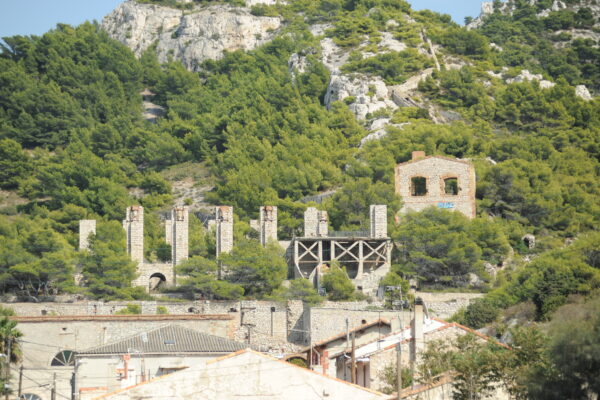
Consequently, Marie-Charlotte Bellinghery emphasizes that the heritage preservation of industrial ruins must be approached with caution. « The act of narrating helps to understand, to raise awareness, to bring people together. But, is this really what should be done for the calanques? If this is used as a storytelling and marketing argument to say, “So it’s very beautiful, it’s heritage, so we don’t touch it,” then it seems to me even wrong, in the sense that if there is pollution and if there is danger, or concern from users and the population, I think it’s important to put things in place, if only to reassure, » she says.
Carole Barthélémy brought the park into focus as a vital research partner and recommended an exploration of its activities.
3 – Overcoming governance challenges and reconsidering nature
3.1 – The Limitations of Segmented Administration
The hybrid status of the park thus requires it to be subject to complex governance, leading to interactions and collaborations between different stakeholders. However, public entities prove ineffective. Carole Barthélémy speaks of the “articulation of avoidance.” She sheds light on the inability of various administrative and governmental entities to work cohesively to effectively tackle the problem of soil pollution in the Calanques of Marseille. Each entity “avoids” venturing beyond its domain of competence and responsibility, resulting in an inability to formulate a comprehensive and effective policy to address pollution.
A striking example of this “articulation of avoidance” is the handling of lead pollution in the Saména sector. Despite the recognition of health risks by the Regional Health Agency (ARS), the relevant report remained on the prefect’s desk for a year, delaying its public release. Meanwhile, the Regional Directorate for the Environment, Planning and Housing (DREAL) focuses on monitoring potential depollution, but it is constrained by the regulatory framework of the national park. Furthermore, local depollution efforts, requiring significant financial resources, have been impeded by a lack of political will and cooperation between different entities.
The “articulation of avoidance” thus highlights the limitations of a segmented administration in the face of environmental issues that require coordinated and transversal action.
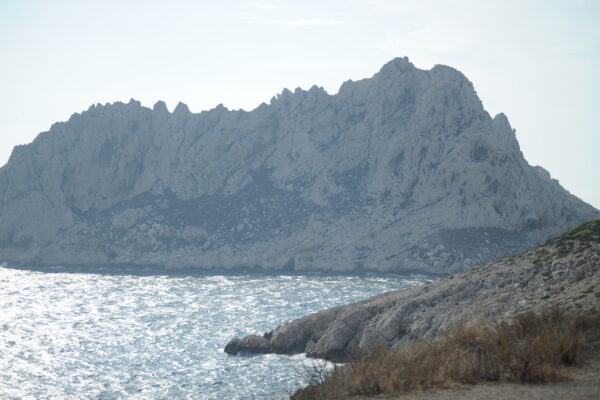
Scientists, specifically ecologists, complement these stakeholders, focusing on facilitating nature’s resilience. They observe the plants developing around industrial ruins and study the mechanisms that enable this phenomenon and are consequently key stakeholders of the governance of the Park. However, as Isabelle Lafont Schwob points out, it remains a complex task to transition from knowledge production to its utilization and incorporation into decision-making, indicating a lack of effective dialogue.
3.2 – Divergent Narratives and Complex Motivations
Moreover, divergent narratives are found within the same category of individuals, signifying a fragmentation of risk management intentions even within private spheres.
During our interview, Isabelle Laffont-Schwob emphasized the fragmented nature of the Marseille area and how each space within the Calanques tells a different story. She contrasted the Legré Mante area, which is deeply engaged in addressing pollution issues, with places like Cale Longue, where historical pollution has been entirely overlooked. Despite its past as a soda factory site riddled with industrial waste, Cale Longue’s residents have reconstructed their history, presenting it as a “charming fishing village” – an illustration of how record-keeping can often obscure the history of pollution. Marie-Charlotte Bellinghery refers to this, telling us about one of her excursions in the calanques: « When you arrive at Callelongue, there’s a small sign that only tells you that this port has been a pretty fishing spot for 200 years, without mentioning the factories, the slag heaps. There’s a total omission. »
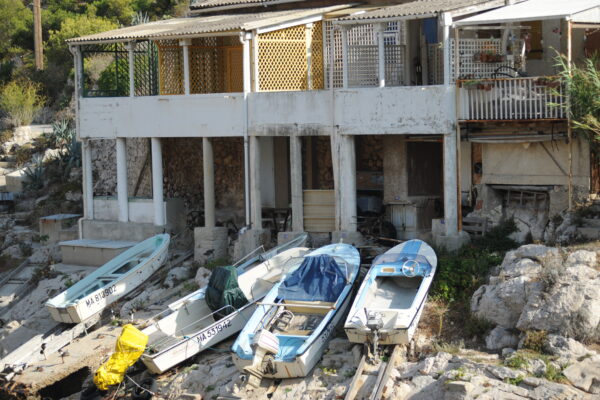
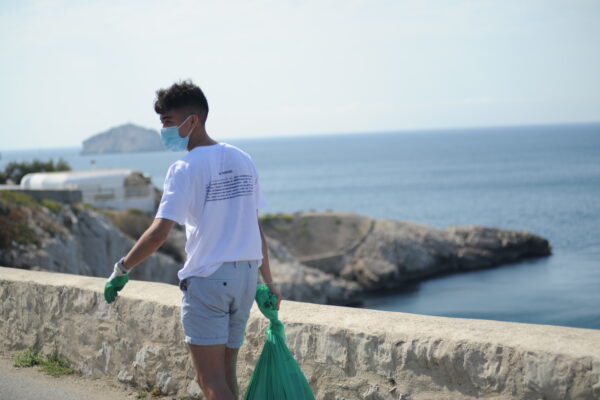
Alice Mathieuresuge, a 20-year-old student who grew up in Marseille and whose grandmother owns a house in the Samena calanques area, also shared with us another explicit example of this conflict of narratives : « My parents always strictly forbade me from swimming at that beach. When I was little, I didn’t really understand why. My parents told me that the water was dangerous and polluted, but my friends swam there, and I was the only one not allowed to. When I told my grandmother, she would quickly become angry and immediately oppose this view, saying that there was nothing purer and more 100% Marseille than that beach. As I grew up, I learned a bit more about the past of this beach, but it remained a subject, let’s say taboo, that we did not talk about in the presence of both my parents and my grandmother because it would quickly turn into an argument, and my grandmother didn’t want to hear anything about it. »
This divergence in narrative could be mistakenly attributed to varying degrees of residents’ heritage attachment. However, according to Francis Talin and Carole Barthélémy, socio-economic factors heavily influence individuals’ discourses. The cheaper, ideally situated shacks on the edges of the Calanques in Saména, for instance, have mainly been purchased by low-income families. Their fear of potential eviction has led to a heritage narrative strategically deployed by these populations. It is thus crucial to demystify the narratives to discern the actual motivations that shape them, shedding light on the complexity of managing the Calanques.
Conclusion
The paradox that emerges around the concept of risk from industrial ruins underscores a conundrum. Strictly protected natural spaces could arguably epitomize the dualism discussed by Philippe Descola. As Francis Talin ironically asserts, “We invented the concept of nature to distance ourselves from it.” If we strive to secure polluted areas from industrial ruins and protect nature from human action, aren’t we contradicting the very history of these Calanques, which have always existed through the interaction between man and nature within a shared system?
Would the solution then lie in governance modeled after the concept of technical democracy as envisioned by Michel Callon, Pierre Lascoumes, and Yannick Barthe? Could we genuinely acknowledge hybrid forums through expanded collaborations and diversification of participants? As Ostrom encourages, could a self-regulated dialogue, with no imposed rules or domination by any party, materialize? Isabelle Lafont Schwob criticizes that decisions about the Marseille Calanques have often been made “at the expense of” and encourages seeking compromises that benefit all dimensions.
Interviews
Isabelle Lafont-Schwob – Ecologist, Aix-Marseille University, IMBE Department, Department Member. Studies Plant-soil-microorganism interactions and Phytoremediation
Carole Barthélémy – Sociologist, Aix-Marseille University, Associate Professor of Sociology within the Population Environment Development Laboratory
Francis Talin – Oceanographer, formerly in charge of the development of the charter for the Calanques National Park since its creation in 2012
Marie-Charlotte Bellinghery – An ecologist activist in her thirties who has lived in Marseille for approximately 10 years and has a passion for the calanques
Alice Mathieuresuge – A 20-year-old student who grew up in Marseille and whose grandmother owns a house in the Samena calanques area
Bibliography
Calanques
Daumalin, Xavier, and Isabelle Laffont-Schwob. Les Calanques Industrielles De Marseille Et Leurs Pollutions: Une Histoire Au Présent = Pollution of Marseille’s Industrial Calanques: The Impact of the Past on the Present. REF. 2C éditions, 2016.
Deboudt, Philippe. “The Territorial Construction of the Calanques National Park (1971-2012),” in Le Parc national des calanques. Construction territoriale, concertation et usages. Edited by Valérie Deldrève and Philippe Deboudt. Versailles: Quae, 2012, 25-52.
Ginelli, Ludovic, Vincent Marquet, and Valérie Deldrève. “Practicing Nature Well… to Protect the Calanques?,” Ethnologie française, vol. 44, no. 3, 2014, 525-536.
Hérat, Arlette. “A Nature Policy Tested by Territory: The Cayolle District and the Sormiou Calanque (Marseille),” in Le Parc national des calanques. Construction territoriale, concertation et usages. Edited by Valérie Deldrève and Philippe Deboudt. Versailles: Quae, 2012, 53-72.
French National Parks
Chamboredon, Jean-Claude. “The Naturalization of the Countryside: Another Way to Cultivate Simplicity?” in Protection de la nature: histoire et idéologie. De la nature à l’environnement. Edited by Anne Cadoret. Paris: L’Harmattan, 1985.
Larrère, Raphaël, Bernadette Lizet, and Martine Berlan-Darqué. Histoire des parcs nationaux. Comment prendre soin de la nature? Éditions Quæ, 2009.
Stock, Mathis. Progress in French Tourism Geographies: Inhabiting Touristic Worlds. Springer, 2021. https://public.ebookcentral.proquest.com/choice/publicfullrecord.aspx?p=6452032. Accessed 17 May 2023.
Foreign National Parks
Miles, John C. Wilderness in National Parks: Playground or Preserve. University of Washington Press, 2009. http://site.ebrary.com/id/10389914. Accessed 17 May 2023.
Taylor, Dorceta E. “The Rise of Environmental Justice Paradigm. Injustice Framing and the Social Construction of Environmental Discourses,” American Behavioral Scientist, 43, no. 4 (2000): 508-580.
Thompson, Jessica et al. America’s Largest Classroom: What We Learn from Our National Parks. University of California Press, 2020. https://www.degruyter.com/isbn/9780520974555. Accessed 17 May 2023.
Broader Environmental Issues
Larrère, Catherine. “Environmental Ethics,” Natures, Sciences, Sociétés 18, no. 4 (2010): 405-413.
Parisis, Jean-Louis, and Michel Péraldi. La Mise au vert. Des rapports de l’État et du mouvement associatif dans l’institutionnalisation des loisirs de nature. Doctoral thesis, Université de Provence Aix-Marseille 1, 1981.
Runte, Alfred. National Parks: The American Experience. Fifth ed. Lyons Press an Imprint of Globe Pequot, 2022.
Van Tilbeurgh, Véronique, and Muriel Charlier-Kerbiguet. La Mer d’Iroise. Négociations sur le principe de protection. Presses universitaires de Rennes, 2007.







